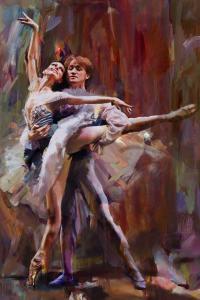Sale on canvas prints! Use code ABCXYZ at checkout for a special discount!

Overview
During the mid-nineteenth century, the provocative and sensuous Aesthetic movement threatened to dismantle Britain's fussy, overbearing, and conservative Victorian traditions. More than a fine art movement, Aestheticism penetrated all areas of life - from music and literature to interior design and fashion. At its heart was the desire to create "art for art's sake" and to exalt taste, the pursuit of beauty, and self-expression over moral expectations and restrictive conformity. The freedom of creative expression and sensuality that Aestheticism promoted exhilarated its adherents, but it also made them the object of ridicule among conservative Victorians. Nonetheless, by rejecting art's traditionally didactic obligations and focusing on self-expression, the Aesthetic movement helped set the stage for global, twentieth-century modern art.
Key Ideas
1. Rebelling against Victorian materiality and modern industrialism (particularly what they criticized as the impoverished and repetitive designs of consumer products created cheaply by "soulless" machines), Aesthetic artists placed a premium on quality craftsmanship in the creation of all art. Some even revived pre-industrial techniques in the process.
2. Aesthetic artists touted the adage "art for art's sake," divorcing art from its traditional obligation to convey a moral or socio-political message. Instead, the focused on exploring color, form, and composition in the pursuit of beauty.
3. Distinct from the Victorian preference for fussy decor, curvaceous forms, and abundant detail, Aesthetic art is characterized by subdued colors, geometric designs, and simplified linear forms. The movement took as its primary sources of inspiration Pre-Raphaelite painting's of flaming red haired beauties, medieval geometric designs, and Japanese motifs and aesthetics.
4. The Aesthetic Movement maintained that art should not be confined to painting, sculpture, and architecture, but should be a part of everyday life. To this end, Aestheticism embraced not only the "high" arts, but also ceramics, metalwork, fashion, furniture-making, and interior design. Many Aesthetes, most notably Oscar Wilde, even adopted public personas through which they lived according to Aesthetic principles.
CATF
CATF has a diverse range of art which adhere to the tradition of aestheticism. To check out our collection of aesthetic paintings click on the link below.
1-catf.pixels.com